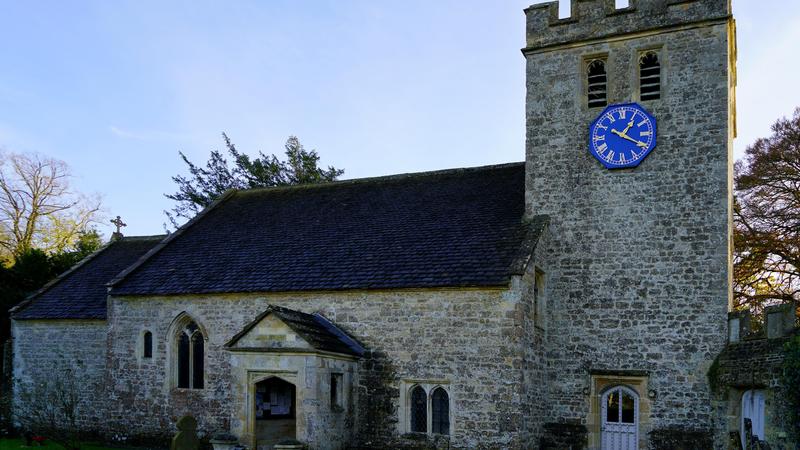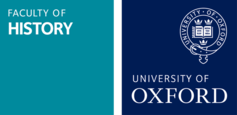Medieval Wytham
In the context of community history, the purpose of the ‘medieval’ strand in the Wytham project is as a ‘proof of concept’: that is, to reveal the potential of medieval records for understanding the local communities of the past. Of course, for the middle ages, the records that were made were not the census, newspapers, photographs, or diaries that are available in local record offices for the nineteenth and twentieth centuries. Even parish registers, one of the mainstays for local historians, begin only in the sixteenth century. But the first step for any historian is to take such evidence as does exist and to do it justice on its own terms. For any local community of the medieval period there are usually some documentary records – those made by royal government, the Church, and landlords; and it is these that we have focused upon in the research completed thus far on Wytham.

Wytham Church
The medieval English royal government was surprisingly centralized in its authority and was able, particularly between the eleventh and the fourteenth centuries, to commission various countrywide surveys of wealth, rights, and landownership. The best known of these is the remarkable Domesday Book, made on the orders of William the Conqueror, which tells us about the thriving community that existed at Wytham in the later eleventh century. By the thirteenth century an increasingly professional (and acquisitive) royal administration was able to produce remarkably detailed surveys; and the fiscal needs of the thirteenth and fourteenth centuries, plus the demographic impact of the plague outbreaks from 1348-9, occasioned assessments for subsidies and poll taxes.
There is also evidence for Wytham in the records of the medieval Church, including the Register of nearby Godstow Abbey which shows that there was a church in Wytham by the early twelfth century. The tax assessment made under the authority of Pope Nicholas IV in 1291 reported the value of All Saints’ church at Wytham as £5, 13s. 4d, including the abbot of Abingdon’s pension. Although the church that serves the community of Wytham now was rebuilt in the nineteenth century it does incorporate some important medieval features including stained glass and commemorative brasses.
A third main category of source are the materials relating to the manor of Wytham. A search for Wytham on the Manorial Documents Register produced a thirteenth-century charter in which Geoffrey de Kypenham of Wytham conveyed a small piece of land to Richard Ingald. The particular interest of the deed was that the recipient was specifically prohibited from granting the land to men of religion – suggesting that Geoffrey shared in the more general concern among landowners that was increasingly widespread in the thirteenth century about land passing into the control of the Church.
Lordship of the manor of Wytham stayed with successive generations of the de Wytham family until the middle of the fifteenth century. But a rent roll of 1492-3 shows that the new owner, William de Harcourt, was keen to find out what was owed to him. The rent roll is a wonderful snapshot of life in Wytham in the period. There was a manor with a garden and orchard. The demesne land is described in terms of acreage and names give us a clue as to topography and use: gravel pits, an enclosure called Osmond; sandhill; bryckenhill. There were arable lands in demesne, and meadows whose main yield was hay. There was underwood for fuel. Most of the tenants paid a money rent but there were some carting services too. Several religious houses had property here: the abbot of Abingdon’s parcel of meadow had a 40-foot wide ‘way’; the abbot of Eynsham owed suit of court (which would suggest that a manor court was held here); the abbey of Godstow had to supply bread, cheese and ale when the meadows were being mowed. Another important tenant was one Thomas Howse whose holdings included water to fish in. And William, lord of the manor, had two shillings a year from Botley mill!
Selected primary sources
Manuscripts:
Bodleian Library, Special Collections:
MS Ch Berks 248 – Charter of Geoffrey de Kypenham
MS Rolls, Berkshire 12 – 1492-3 Rental of Wytham
Published primary sources:
Domesday Book: Berkshire edited by Philip Morgan and others (Chichester: Phillimore, 1979)
The English Register of Godstow Nunnery, near Oxford, written about 1450 edited by Andrew Clark (London: Early English Text Society, 1911)
Taxatio Ecclesiastica Angliae et Walliae Auctoritate P. Nicholas IV, edited by T. Astle, S. Ayscough and J. Caley (London: Record Commission, 1802) – the online data base version of the Taxatio, hosted by the Digital Humanities Institute of the University of Sheffield, is here: https://www.dhi.ac.uk/taxatio/forms
Background reading on medieval Wytham:
Victoria County History of Berkshire, IV, edited by P.H. Ditchfield and William Page (London: Institute of Historical Research, 1924)
EAG 4.ix.24


